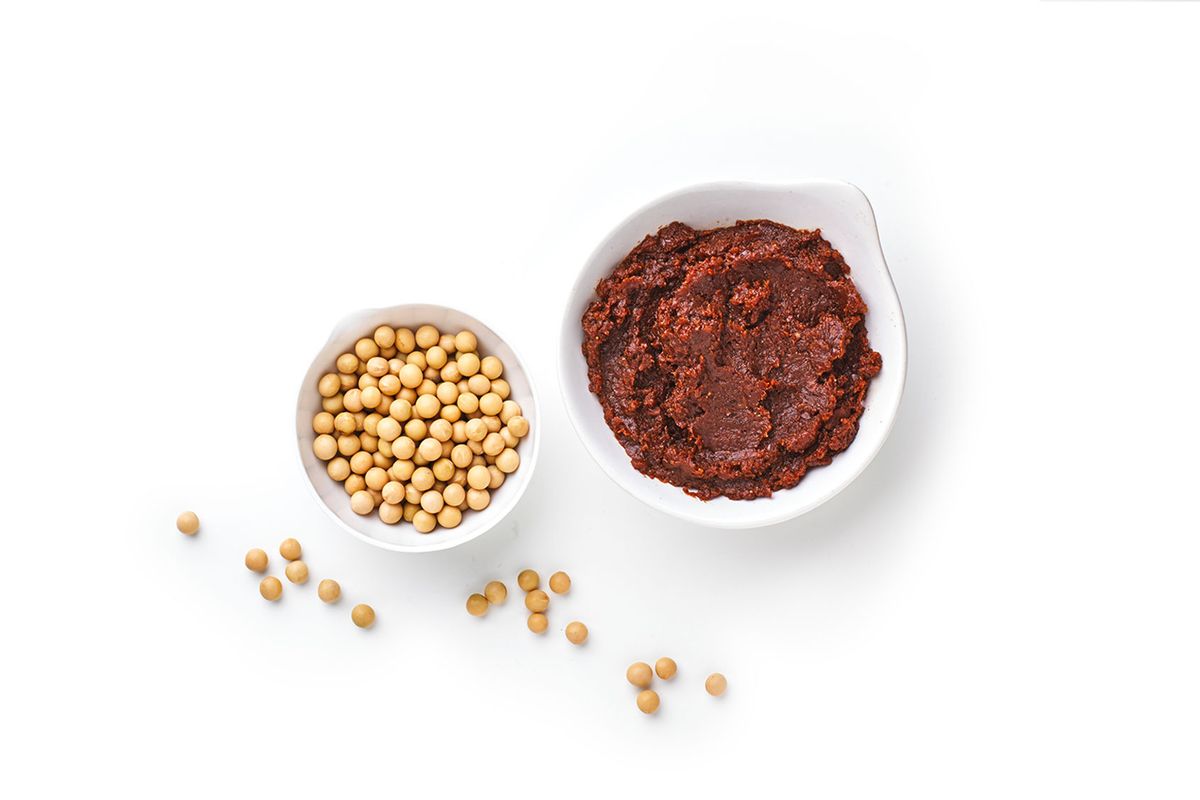In this week's "Top Chef" episode, multiple cheftestants incorporated miso into their dishes, both sweet and savory.
Over the years — dating all the way back to Katie Lee's hosting tenure — miso has been a star ingredient on the culinary competition reality show. At the same time, though, beyond the ubiquitous miso soup at many a sushi restaurant, the staple remains decidedly unapproachable for many home cooks. That shouldn't be the case.
I assure you, miso is so much more than just a soup base.
Throughout the Salon recipe archive, there is a host of recipes involving miso, from a vegetable marinade to seasoned bacon, from a cookie to a vegan protein. Miso adds a depth of flavor, a richness, a funky bite, a salty note and a hard-to-pinpoint umami sensation. It's one of my favorite ingredients — and maybe, after reading this, it can be come one of yours.
When I was a Milk Bar stan, I was obsessed with the idea of the miso butterscotch chai, which still reigns supreme as one of the most strikingly flavorful food concoctions ever devised. Over in Bon Appetit, Katie Okamoto says "miso contains multitudes." A 1998 Saveur article dubs it "magical miso." Clearly, it's something held in very high regard.
Jolinda Hackett at The Spruce Eats defines miso as "a fermented pasta that adds a salty umami flavor to many Japanese dishes." also noting that there are actually over 1,000 types of miso — primarily broken down by color, usually ranging from white or light (with a yellow-ish tinge) to a heavier, darker miso that is stronger and darker in color.
Zoe Denenberg writes in Epicurious that miso consists of soybeans, salt and koji before being aged "for months or even years." Koji, as Deneberg puts it, is an "ancient fungus" that serves as a starter for fermentation purposes. It is often extracted from a grain before being mixed with soybean and salt.
Want more great food writing and recipes? Subscribe to Salon Food's newsletter, The Bite.
I generally use shiro miso — or white miso — when I'm stirring it into cookie batters, glazes, soup bases, mayonnaise, vinaigrettes, desserts or sauces. Shiro miso and aka (or red) miso are the most commonly found in stores.
There is basically no limit to how you can use miso. Stir into a savory or sweet bread dough. Whisk it into a creamy pasta sauce. Brush it on protein before grilling. Make the wildest pudding you've ever tasted. Incorporate it into a pizza topping. Pair it with raw vegetables for dipping. If you're looking to deepen your flavor profiles and be a bit more adventurous, then miso is your best friend.
I will also generally note — please don’t salt as you would normally when using miso. It is quite a bomb of salt and umami in one bite, but it can take any dish into a staggeringly salty category very quickly. Use with discretion! (Speaking of, how funny was that oddly lingering shot on the Morton kosher salt after Dan placed it on the table in the Quick Fire?)
We need your help to stay independent
"Top Chef" takeaways, Episode 5
- So interesting to learn a bit about the legacy of Carson Gulley and his sauces! I wasn’t familiar with him and will now do much research.
- The “Laura is a villain” edit seems overwrought to me? To barely show us this cheftestant at all —sans that one weird moment in which she didn't acknowledge her part in Dan falling in the spilled cream — and then shift to an oddly negative focus felt odd. At the same time, though, I'm terrible at numbers and dissociate whenever money is discussed at length, but it was quite evident even to me that she badly bungled her team's budget (and that's putting it lightly). $1000 for five people to cook for forty people is pretty absurd, to be fair, especially with the food prices are right now. From a production standpoint, though, it feels kind of arbitrary and silly to assign such a low number to possibly rile up drama, but in actuality, simply produce subpar food.
- It was very interesting to see — for the very first time — a direct impact of the new rule. We saw our this week's Quick Fire winner go home in the elimination challenge, one in which he normally would've been immune.

Shares